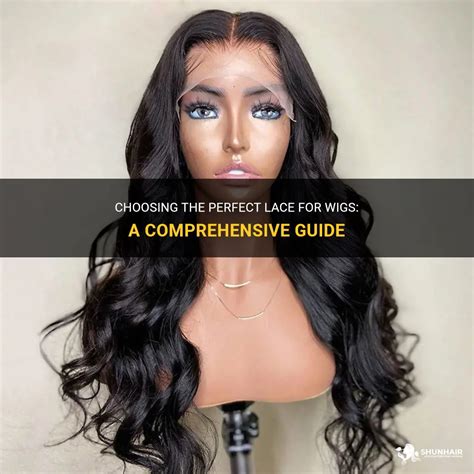Wigs have become increasingly popular in recent years, thanks to their versatility and ability to transform your look instantly. Whether you’re looking to change up your style, cover up hair loss, or simply add some volume, there’s a wig out there to suit your needs.

But with so many different types of wigs on the market, it can be difficult to know where to start. That’s why we’ve put together this comprehensive guide to help you choose the perfect wig for you.
Choosing the Right Wig
Before you start shopping for wigs, it’s important to consider your needs and lifestyle. Ask yourself the following questions:
- Why do you want to wear a wig?
- What kind of look are you going for?
- How often will you be wearing the wig?
- How much time and effort are you willing to put into caring for the wig?
Once you’ve answered these questions, you can start narrowing down your choices.
Types of Wigs
There are three main types of wigs: human hair wigs, synthetic wigs, and blends.
Human Hair Wigs
Human hair wigs are made from real human hair, which gives them a natural look and feel. They are also more durable than synthetic wigs and can be styled with heat tools. However, human hair wigs are also more expensive than synthetic wigs.
Pros:
- Natural look and feel
- Durable
- Can be styled with heat tools
Cons:
- Expensive
- Requires more care than synthetic wigs
Synthetic Wigs
Synthetic wigs are made from a variety of synthetic fibers, such as nylon, acrylic, and polyester. They are less expensive than human hair wigs and are available in a wider range of colors and styles. However, synthetic wigs are not as durable as human hair wigs and can be damaged by heat tools.
Pros:
- Less expensive than human hair wigs
- Available in a wider range of colors and styles
- Requires less care than human hair wigs
Cons:
- Not as durable as human hair wigs
- Can be damaged by heat tools
Blends
Blends are wigs that are made from a combination of human hair and synthetic fibers. They offer a good balance of price, durability, and naturalness.
Pros:
- More affordable than human hair wigs
- More durable than synthetic wigs
- More natural-looking than synthetic wigs
Cons:
- Not as natural-looking as human hair wigs
- Requires more care than synthetic wigs
Choosing the Right Wig for You
Once you’ve decided on the type of wig you want, you can start narrowing down your choices based on your specific needs and preferences. Here are a few things to consider:
-
Cap construction: The cap construction of a wig refers to the way the hair is attached to the base. There are three main types of cap constructions:
- Lace front wigs: Lace front wigs have a thin layer of lace at the front of the wig, which gives the appearance of a natural hairline. Lace front wigs are more expensive than other types of wigs, but they offer the most natural-looking results.
- Monofilament wigs: Monofilament wigs have a thin layer of monofilament at the crown of the wig, which gives the appearance of a natural scalp. Monofilament wigs are less expensive than lace front wigs, but they still offer a natural-looking result.
- Weft wigs: Weft wigs are the most basic type of wig. They are made by attaching hair to a series of wefts, which are then sewn onto a cap. Weft wigs are the least expensive type of wig, but they are also the least natural-looking.
-
Color and style: The color and style of the wig should be chosen to complement your own personal style and preferences. If you’re not sure what color or style to choose, you can consult with a wig stylist.
- Fit: It’s important to choose a wig that fits your head properly. If the wig is too loose, it will slip off your head. If the wig is too tight, it will be uncomfortable to wear. To ensure a proper fit, measure your head circumference before ordering a wig.
Caring for Your Wig
Once you’ve chosen the perfect wig, it’s important to take care of it properly in order to extend its lifespan. Here are a few tips:
- Wash your wig regularly: The frequency with which you need to wash your wig will depend on how often you wear it and how much product you use. However, it’s generally a good idea to wash your wig every 2-3 weeks.
- Use the right shampoo and conditioner: Use a shampoo and conditioner that is specifically designed for wigs. Regular shampoos and conditioners can contain harsh chemicals that can damage the wig.
- Avoid heat styling: Heat styling can damage the hair on your wig. If you must use heat tools, use them on a low setting and only for short periods of time.
- Store your wig properly: When you’re not wearing your wig, store it on a wig stand or in a box. This will help to protect it from dust and damage.
Conclusion
Wigs can be a great way to change up your look, cover up hair loss, or simply add some volume. With so many different types of wigs on the market, there’s sure to be one that’s perfect for you.
By following the tips in this guide, you can choose the right wig for your needs and preferences. With proper care, your wig will last for years to come.
